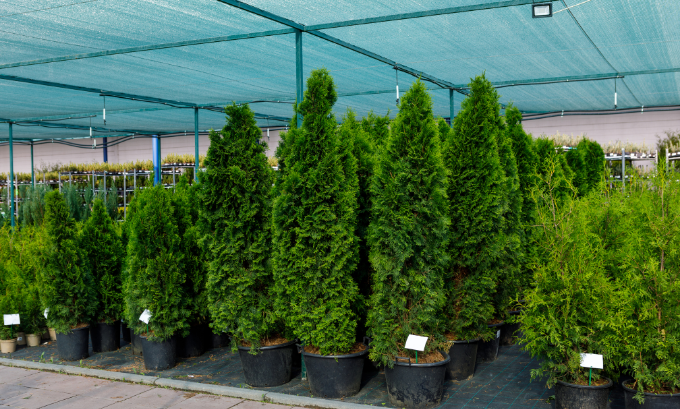That screen or hedge you plant will become an essential component of your garden. Making the appropriate selections, producing it correctly, growing it up, and maintaining it are all stages toward creating the ideal hedge — one that is attractive, practical, and easy to maintain. Hedge plants may all appear to be the same colour, but they are all unique, and picking the appropriate choice is the first step toward that ideal planting. Thuja Emerald and Thuja Martin are, without a doubt, the two best evergreen trees for hedging.
Both of these trees are evergreen conifers classified as Thuja by botanists. They are a tiny group of cypress trees that belong to the cypress family. They're all different sizes of trees with scaly green leaves clinging to small fan-shaped branches, forming a thick framework. Conifers are trees that sprout tiny cones as they get older. Cedars, arborvitae, and thujas are all synonyms for the same tree.
While it may not appear that there is much of a difference between different varieties of the same plant, such as Thuja Martin and Thuja Emerald, there are significant differences between them that will dramatically alter the appearance of your landscape.
Check out the Thuja Emerald at Thujor. See if you're seeking a winter-hardy evergreen. It can withstand temperatures as low as -40 degrees Fahrenheit and is suited for growth zones 3 through 8. Emerald Green Thujas are ideal for smaller settings because they only grow to 8 to 12 feet, and they grow to be roughly 3 to 4 feet broad and have a significantly narrower spread. Emeralds will fit better in confined locations along the driveway or property lines, and their compact stature makes them suitable for container gardening.
Here are a few points that clearly distinguish Emerald Thujas from other plants of the Thuja family
- Emerald Green Thujas have a more robust green glow, gleaming brightly in the sunlight. They have a more columnar shape, with the same breadth almost to the top before narrowing.
- Pest and disease resistance is extreme in Emerald Thujas. While most evergreens succumb to bagworms, spider mites, molds, and fungus, Thujas fights them all!
- They can also withstand harsh weather conditions. Under high amounts of snow and ice, their robust, straight branches will not shatter. They don't succumb to heatwaves or dryness caused by cold winter winds since they have a high drought tolerance.
- Thujas aren't fussy about the soil they grow in. They may grow in poor soils, including acidic, sandy, and clay-rich soils with poor drainage.
- When it comes to Thujas, there is no need to wait. Thuja martin and Thuja Emerald grow at a pace of up to five feet each year, allowing them to mature into enormous, mature trees fast.
- The watering and feeding regimens aren't necessary for Thujas. They'll grow big and robust on their own if they get enough water. They do not require fertilizers or pesticides.
- Please don't worry about Thujas becoming too enormous; while they can grow to gigantic proportions, they are also easy to shape and manage. Emeralds and Green Giants may be formed into hedges and maintained at specific sizes and forms. On our website, you may learn more about these privacy tree features.
Conclusion
Therefore, we can say that Thuja Martin is a fast-growing shrub that combines the advantages of Brabant and Emerald in one plant. It can be shaped, but it's just as delicate and dense without cutting.
The leaves and branches of this Thuja are brighter than those of other thujas. In its development, it is exquisite and majestic. It also grows very tall without being pruned, making it ideal for those seeking privacy on slopes and other areas. Seasonal growth is around 30-70 cm.
On the other hand, Thuja Emerald grows incredibly densely and uniformly. Therefore be careful when planting to avoid the appearance of a trip, stair, or troll. The foliage turns a beautiful deep green in the winter, and there's no need to cut it. Only the top can be cut. If you want a clipped hedge, avoid Emerald. The Emerald also grows together at the top over time. However, its growth pattern is initially cone-shaped.
This plant is frequently chosen when style and refinement take precedence over privacy. If you're planting on a slope, in a wall arrangement, or anywhere else, choose Emerald when it's not trimmed. Approximately 20-30 cm of growth per season. Zones 1 through 5 Consumption is about 2-3 per meter





